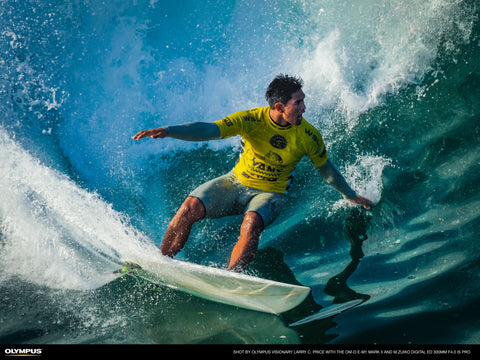MICRO Four Thirds Cameras...What are they? What are the benefits and why would you want one?

Want to lose weight...In your camera bag?
First off, let me say that I love my Canon DSLR camera and in fact all cameras have their benefits. For those of us who love to travel, take wildlife/bird photography or sports photography, now is the time to look at a MICRO 4/3rds camera like the Olympus or Panasonic cameras.
( Do not get hung up on sensor size. There is more to photography then sensor size and megapixels.) Micro 4/3rds describes the size of the sensor.
So what is a MICRO 4/3rds camera? The typical sensors sizes that exist in most digital cameras are:
Full Frame 24x36mm- No cropping occurs when using a full frame lens.
APS-C sensor- basically the next smaller sensor to a full frame sensor. Lens crop is either a 1.5X crop when using Nikon or a 1.6X crop when using Canon cameras.
MICRO 4/3rds-Give a 2x crop on Panasonic and Olympus lenses.
1 inch and 1/2.3 sensors found on point and shoot cameras.
What does a lens crop mean? If a 50mm lens is used on a full frame camera then the angle of view is still 50mm which replicates the angle of view that our eyes normally sees. A 50mm lens on an APS-C sensor will either be equivalent to a 75mm lens on a Nikon camera (figure it by multiplying the lens focal length by the crop) 50mmX1.5 or equal to an 80mm on a Canon crop sensor.
On a MICRO 4/3rds sensor a 50mm lens is equivalent to a 100mm or 50mmx2.
Why do we care about the sensor size? The larger the sensor size, like a full frame sensor, the bigger the pixels or buckets of light are, which gives better image quality in low light situations.
The downside to a full frame sensor is that it cost more to make. Also creating a lens to cover that image area of the sensor means that the lenses must also be bigger, heavier and more expensive.
For example the Olympus 40-150mm F2.8 ( shown on the right) which is an equivalent to a 70-200mm F2.8 lens weighs only 1.67 lbs, compared to a Nikon, Canon or Sony which are all over 3 lbs. Add in the additional weight savings on the Micro 4/3rds camera bodies and now you have considerably lightened your camera bag.
Benefit...
*So when you are backpacking, you will appreciate a lighter camera bag.
*Traveling on the airlines these days carries a lot of weight restrictions, so using a mirrorless camera system may help over come that issue.
* Photographing birds/wildlife/ sports, anything that requires a long fast aperture lens, meant carrying a heavy lens. A Micro 4/3rds lens is lighter, smaller and means less chance of camera shake.
In addition, most of the Micro 4/3rds camera bodies have in body stabilization so that you can hand hold at slow shutter speeds, meaning if you forgot your tripod you have a better chance at getting less camera shake.
I have photographed a day long event with Nikon 70-200mm F2.8 lens, while the image quality is great, by the end of the day, my wrist was killing me and I needed a chiropractor.
So I will admit, I am a weenie and the older I get the more of a weenie I become so I tried the Micro 4/3rds system.
I shot all day with an Micro 4/3rds and the equivalent to an 80-300mm F2.8 lens and did not break a sweat. The camera and lens felt like a natural extension of my arm.
You are probably wondering, great I save weight, but what do I lose.
Just like in DSLR camera systems, they make cameras for beginners, intermediate and yes, for pros. The high end Micro 4/3rds, like the Olympus OM-D E-1M II or the Panasonic G9, offer better weather sealing, dual card slots, fast motor drive and all the features that a professional would appreciate. There are award winning photographers like Tracie Maglosky and pulitzer prize winning journalist, Larry Price, that photograph with Micro Four Thirds cameras.


There are also entry level cameras that are small and easy to use and affordable. Check out the Olympus OM-D E-10 III or the Panasonic GX850.
The camera body is just half of the equation; you must have good lenses. Both Panasonic and Olympus lenses, which by the way are interchangeable, offer extremely sharp lenses, like the Olympus M.Zuiko ED 25mm F1.2 lens ( beautiful for portraits) and the Panasonic Leica 50-200mm F2.8-4 lens.
Bottom line, is that no matter what camera and lens you chose, it is the experience of taking the image that is the most important: So you must be happy carrying your equipment and comfortable shooting with it.
There is a camera made that is suited to everyone's needs.
Stop by the Helix store to get your hands on the perfect camera for you.
If you found this info helpful, please like our Helix Camera Facebook page.
← Previous









